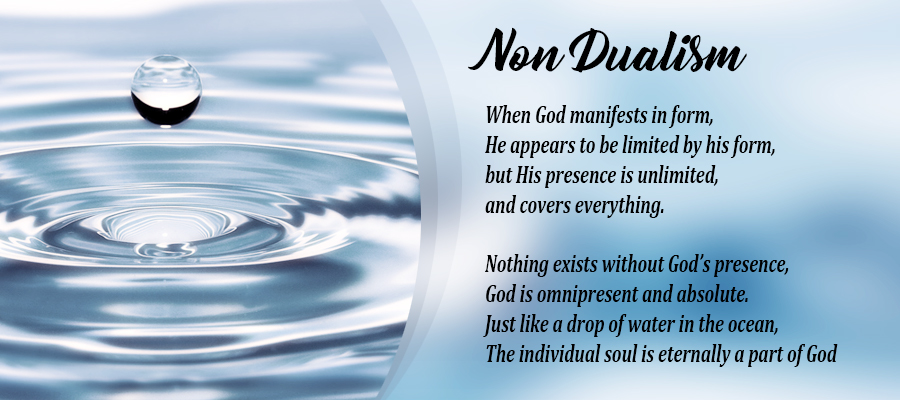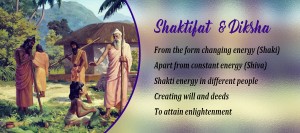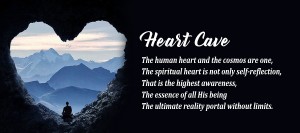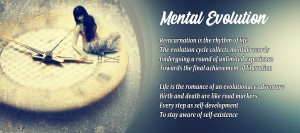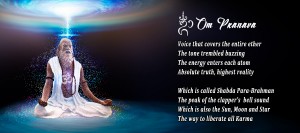In Hinduism, the concept of Brahman and Atman (Self) go hand in hand. Brahman seems to be to stand for some ultimate wholeness, which can integrate all existence, however, there are two different ways to view Brahman. One way to describe Brahman would be that it is the source of all things and that all things will eventually go back to this source. Another way to describe Brahman is as a principle of experience, as that which is the essence of the seeker’s being, that onto which the self of the seeker can be mapped. Brahman is sometimes the cause, sometimes the creator and there are both personal and impersonal explanations of Brahman. As a result, it is important to understand all concepts of Brahman to fully grasp its true nature.
In Advaita Vedanta (non-dualism) philosophy, that the only thing in existence is Brahman. The difference, however, is that the concept of Brahman in Advaita Vedanta is that Brahman is not made up of parts, therefore Atman is Brahman, and Brahman is Atman: not two different attributes like other schools of thought maintain. Atman couldn’t be a quality/attribute of Brahman, because Brahman is not made up of separate parts.
When God manifests in form he appears to be limited by his form, but his presence is unlimited and all-pervading. Nothing exists without God’s presence. God is omnipresent and absolute.
God is in everything, and everything is in God. God exists in everything that we call “good” as well as in everything we describe as “bad”. In God, there is no limitation or differentiation, only unity. Nirguna God is pure energy, the living and conscious power that is at work in the Universe. The reality, the Supreme Self, is Nirguna God.
In the Katha Upanishad it is said:
“Paramātmā is the same everywhere, in every world, on every level throughout the entire Cosmos. Until you recognise this you will continue to be reborn. Paramātmā remains the same – in past, present and future. It is the same in the heart of an ant or an elephant, in every living being. It is the Cause of everything.”
But how can one reach Nirguna?
How can one meditate on God?
How can one become one with God?
Our true Self is Nirguna. It is shapeless; it has no form. The opposite of this is Saguna, our physical body, which we will one day leave. In essence, we are permanently connected to Nirguna. We are Nirguna but are not conscious of this.
Within the universal, divine Phänomen we exist as tiny, individual phänomens. Each one of these phänomen possesses its own qualities. The individual phänomen (Jīvātmā) is like a delicate, iridescent soap bubble. In the centre of this “bubble” is the Ātmā, the Self, hidden and encased in the five Koshas. Ātmā is a tiny spark of light, the essence of Paramātmā.
The relationship between Jīvātmā, Ātmā and Paramātmā, and also between Saguna and Nirguna, can be clarified by comparison with water. Any water on our planet has its origin in the ocean, just as the Ātma existing within us has its origin in God. We can compare water transformed by the addition of different flavours or colours with the Jīvātmā and its personal qualities, and Ātmā, the essence of the higher personality, with pure water. Just as a drop of water is part of the ocean, the Ātmā is eternally a part of God. Quantity plays no role in this – it is only the quality and nature that are important. And we would never describe a drop of water as the “ocean”.
When the water rises in tiny drops from the ocean we call it “mist” or “fog”. When this moisture rises up into the sky it becomes known as “clouds”, and “rain” when it falls down again. The limited, individual existence of a raindrop comes to an end when it unites with other drops in a lake, stream or river; and the existence of the river ends when it flows out into the ocean after a long journey. Then all the drops of water that had united in the river again become the “ocean”.
In the same way as the drops of water re-united with their source, the ocean, our limited, individual existence and consciousness will one day reunite with their source – the unlimited, divine essence. Only the same qualities can unite. Only the same can become one. For as long as we still carry our personal qualities and Karmas with us, union with the divine is not possible. Before we can attain God-Realisation we must shed all those feelings, thoughts and qualities that are obstacles to the development of divine principles.
Our true Self is not the body, nor the feelings, nor the thoughts, and it is neither the intellect nor our qualities. The Self is energy – vibration – it is in constant motion. It is only because of the ignorant notion that we do not know God that a difference exists between the Self and God. God-Realisation means Self-Realisation – and at the same time Self-Realisation is God-Realisation. Those who have not yet realised their Self, cannot realise God; and those who have not experienced God do not know who they, themselves, are.
It is everyone’s goal to reach God again. We are all travellers and each soul is striving to return to God, either consciously or unconsciously. Just as a stone falls to the earth because of gravity, and a river flows into the ocean because of the gradient, an elemental force of attraction draws us back to God. We are all seeking God – our true Self. God is actually within us, but until we recognise this we feel cut off and lost in time and space.
God in Nirguna form is in fact everywhere and in everything, but this is not easily comprehensible or “appealing” to our human intellect. The ultimate goal of humans is to become one in consciousness with the Nirguna form of God. But the medium through which we can reach this goal is the embodied form of God, Saguna.
It is difficult or almost impossible for our intellect to grasp and understand the universal, eternal, all-conscious and omnipresent divine energy. It is much easier for us to have a divine incarnation as a figurehead, towards whom we are able to direct our feelings.
In the Saguna aspect, God appears in a human form making it easier for us to come closer. There have been divine incarnations in every age to show people the path to Nirguna God.
If we want to send a message in a bottle out into the ocean one sure way would be to throw it into a large river; in this way, it will certainly reach the ocean sooner or later. In the same way, if we follow the river of consciousness of a divine incarnation we will reach the ocean of Nirguna safely. When we trust in his guidance we will definitely reach the goal. In this way, Saguna Bhakti, love and devotion to God in a form in which we are able to perceive and worship God, develops quite naturally from Nirguna Bhakti, the realisation of the divine Will.
Lord Krishna speaks about Saguna God in the Bhagavad Gita (4/7):
“Whenever righteousness is on the decline and unrighteousness is on the increase I appear in the material world. From age to age I come into being to protect the good, destroy the bad and consolidate righteousness.”
From time to time the divine light, the power and wisdom of God manifest in a human body. Personalities who are born as perfect and realised ones are called Avatāras, divine incarnations. They come to earth as liberators and saviours, to teach people the eternal truth and inspire them to follow the spiritual path. They are the Satguru, the divine Masters.
Divine incarnations live in the world just like us. Externally there is no difference to other people; their body consists of earthly elements and is subject to the laws of nature, but their mind and consciousness stand above all the laws and limitations of nature. Unlike the rest of us, divine incarnations are not born due to Karmic consequences but come of their own free will and are totally aware of their divine origin and their mission on earth.
There is one question that constantly concerns people: Why the number of divine incarnations on earth?
There is only one God who has neither form nor name. It is the human mind that has created the many different images and forms of God. God is known as Holy Father, Allah, Īshvara, Divine Will, Cosmic Principle, Universal Consciousness, Love, Supreme Self, etc. There are probably as many images and names for God as there are people on the planet. Each person has an impression of God according to their own level of spiritual development and forms their own mental image of God. Everyone expresses their worship for the Divine in their very own way.
A person devoted to God (a Bhakta) is never alone. A Bhakta always feels connected to God and lives happily and contentedly whatever happens. That person thinks of God, meditates on God, speaks about God and avoids anything that can distance him from God. Everything a Bhakta does is done for God. God accepts responsibility for and takes care of those Bhaktas who consecrate their lives and themselves to Him.
- Bhakti is Devotion
- Gyana is Wisdom
- Vairagya is Renunciation of worldly things
- Satsang is the place for spiritual community
These are the four cornerstones of spiritual life. Therefore pray to God to bless you with these four gifts. But if it seems to be a little presumptuous to ask for so much, then pray only for one; the most important one – Bhakti! Bhakti gives us divine light and everlasting bliss.
For as long as we are unable to understand God and the Master in both aspects, Nirguna and Saguna, and believe in them, we cannot attain Moksha (liberation). We should recognise and realise both forms. Whoever has doubts about the Saguna form of God is also unable to realise the Nirguna aspect; and, likewise, meditating only on Nirguna without having Saguna God within your heart, will not lead you to the goal.
Unfortunately, in many cases people’s visions of God have become misguided and dogmatic, and, historically, have given rise to numerous rivalries, disputes and so-called “holy” wars, which are still occurring today.
There are no wars that are “holy” wars. God, who has created the entire world, loves each and every living entity equally. For God, no religion is given precedence. A God who claims to be Christian, Hindu or Muslim is definitely not God, because in God there is no duality. Such limitations are the work of man and cause much suffering in the world.
Often we come across the narrow-minded and fanatical view that “My faith and my God are the best and all others are false, or at least inferior.” It is just like children squabbling over whose father is the best. And just as the parents of each one of us are the “best” parents for us, the form of God that we love and worship is the “right” and “best” form of God for us.
With the knowledge that there is only one God who has been given many different names and forms by those who love God, our attitude to other religions and systems of belief should always be shaped by tolerance and respect. When we are able to see, honour and love God in every one of our fellow humans we are certainly on the right path.

